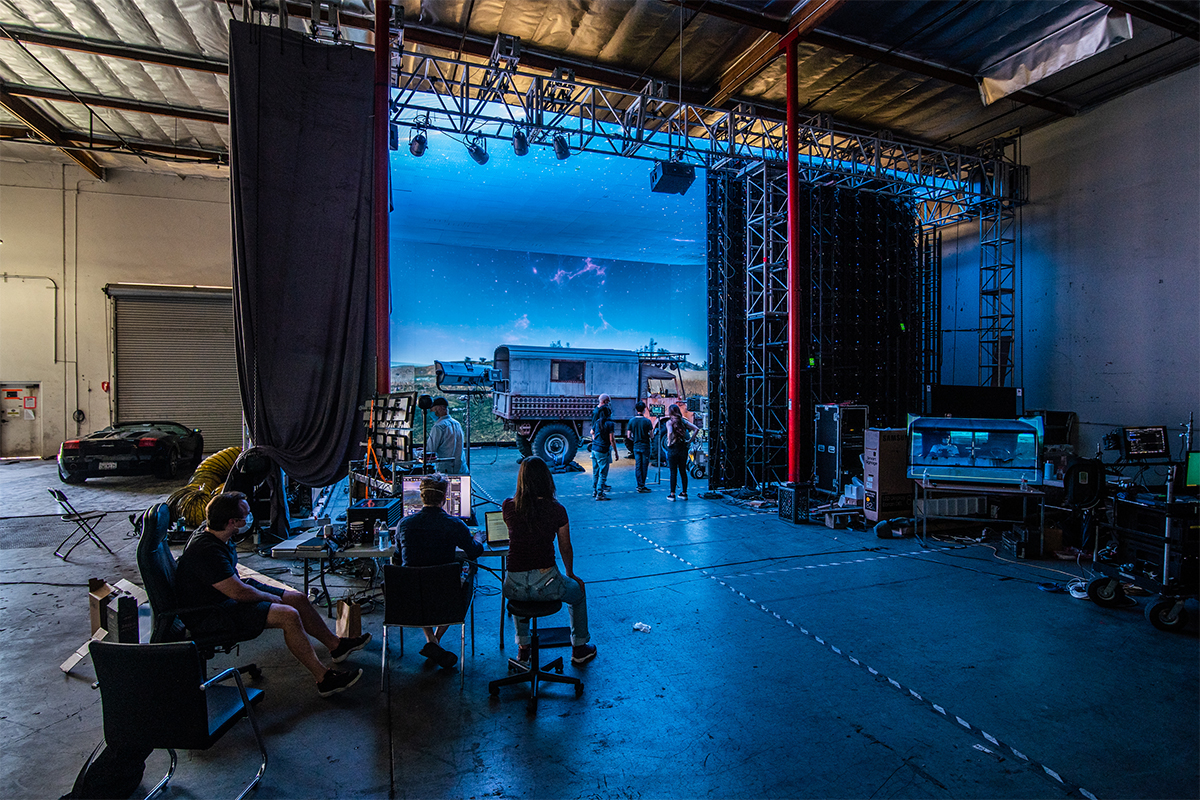The Entertainment Technology Center @ USC’s (ETC) short film “Ripple Effect” demonstrates how Previz, Techviz and Safetyviz can help limit crew and cast to create a safer working environment. Recorded during NAB Show’s summer 2020 Collectively Speaking event, join in to see the advanced techniques implemented during the film’s production, then stay for a recorded Q&A to hear from key players on how it affected production. ETC leveraged virtual production, LED volume and advanced game engine techniques implemented during the film’s production, including visualizing COVID-19 safety narratives for production teams.

What new technologies can be developed — and what existing technologies can be utilized — to create a safer production environment?
With the show-and-tell session “In Harm’s Way: Using Safetyviz to Mitigate Onset Liability,” the team behind the short film “Ripple Effect” demonstrated how it’s possible to use a combination of processes and products for the safest possible production.
Facilitated by Erik Weaver, Director of Adaptive Production and Special Projects at the Entertainment Technology Center @ USC (ETC) , the conversation focused on the proof-of-concept “Ripple Effect,” a project that utilized everything from Safetyviz, a software developed by DigitalFilm Tree, to a spreadsheet that compiled 309 control practices from around the globe to a device called Set Buddy that alerts cast and crew when they’re closer than six feet to those outside their designated “pods.”
Partnered with Virtual Wonders and DigitalFilm Tree, ETC collaborated with ICVR to create a LIDAR scan of the entire set for “Ripple Effect.” The scans were then fed into a gaming engine at Cinecode to create a 3D model with accurate dimensions. Using this model, DigitalFilm Tree founder and CEO Ramy Katrib explains, the production “could visualize physical movement between objects, humans, departments, and equipment.” DigitalFilm Tree then applied what they call “Safety Narratives,” walkthroughs of these LIDAR-scanned locations that follow cast or crew members through their process on-set, to these models and review them with the film’s safety officer.
On set, safety precautions included daily monitoring and screenings, PPE, contact tracing, hand-washing stations, meals outside, and individually wrapped snacks at crafts services. Even with this careful planning, it was still a challenge “translating protocols into practice,” explains Catherine Shin of the USC Chan Division of Occupational Science and Occupational Therapy. She worked on set “keeping everybody mindful of the safety protocols and social distancing” as the crew acclimated to these new processes.
Featured Speakers

Erik Weaver
ETC Special Projects
Entertainment Technology Center @ USC
Moderator

Ramy Katrib
CEO & Co-founder
Digital FilmTree
Panelist

Greg Ciaccio
Creative Technologist, ASC Motion Imaging Technology Council Chair
Head of Post and Production Technologies, “Ripple Effect”
Panelist

Jamie McNeill
Freelance Creative/Line Producer
Key COVID Production Strategist
Panelist

Andrea Aniceto-Chavez
Lead Producer
Cinecode
Panelist

Catherine H.M. Shin
OTR/L, MBA, AMPS, CEAS, Doctoral Resident, Occupational Science Dissemination and Translation Initiative
USC Chan Division of Occupational Science and Occupational Therapy
Panelist

